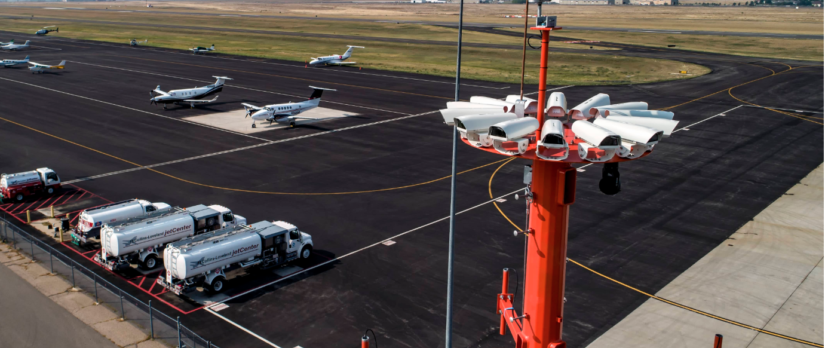 Colorado is one of the most beautiful and challenging place to fly. With the high plains to the east and the 14,000 foot peaks of the Rocky Mountains to the west, Colorado’s diverse topography has challenged pilots since the early days of air travel. Not only did Colorado’s high mountainous terrain pose a challenge with adverse weather and reduced aircraft performance, the high peaks and low valleys of Colorado’s Rocky Mountains made it impossible for air traffic controllers to “see” aircraft using traditional radar systems. In some cases, aircraft radar coverage was lost as low as 9,000 feet MSL in some regions of Colorado. In an effort to overcome this challenge, the Colorado Division of Aeronautics partnered with the Federal Aviation Administration (FAA) in the development and implementation of the Colorado Mountain Radar Project.
Colorado is one of the most beautiful and challenging place to fly. With the high plains to the east and the 14,000 foot peaks of the Rocky Mountains to the west, Colorado’s diverse topography has challenged pilots since the early days of air travel. Not only did Colorado’s high mountainous terrain pose a challenge with adverse weather and reduced aircraft performance, the high peaks and low valleys of Colorado’s Rocky Mountains made it impossible for air traffic controllers to “see” aircraft using traditional radar systems. In some cases, aircraft radar coverage was lost as low as 9,000 feet MSL in some regions of Colorado. In an effort to overcome this challenge, the Colorado Division of Aeronautics partnered with the Federal Aviation Administration (FAA) in the development and implementation of the Colorado Mountain Radar Project.
The result of this two-phased project now allows air traffic controllers to monitor air traffic at Colorado’s busiest ski country airports. Because of this, many of Colorado’s busiest mountain airports are now able to safely accommodate higher seasonal air traffic volumes and reduce aircraft diversions due to adverse weather conditions. This has ultimately increased the level of safety and efficiency at these airports, while also positively influencing economic development of the surrounding communities.
The Colorado Remote Tower Project is essentially the third phase of this project, and will mesh satellite-based technology developed for the Mountain Radar Project with ground-based video technology to give air traffic controllers a comprehensive view of air traffic on the surface of an airport, and in the surrounding airspace.
In 2015, a site selection process was conducted to determine a suitable location to test and assess Remote Air Traffic Control Technology. Based on several factors including air traffic mix, aircraft operational levels, proximity to a major airport, and local support, it was determined that the Northern Colorado Regional Airport (FNL) would be the official test facility for the Colorado Remote Tower Project. In July of 2017, following significant efforts to develop the project requirements and scope, the FAA selected Searidge Technologies to design, install, test, and certify the remote tower equipment being tested at FNL.
Project Goals & Benefits
The Colorado Remote Tower Project will be the first of its kind to integrate both satellite and ground based technologies to help elevate the level safety, operational efficiency, and economic environment at busy airports with uncontrolled airspace. The overall scope of the Colorado Remote Tower Project falls directly in line with the Mission and Vision Statement followed by the Colorado Division of Aeronautics and the Colorado Aeronautical Board:
- Safety Benefits
- Cost effective solution to managing potential risk to aircraft operators in a busy airport environment such as Northern Colorado Regional Airport.
- Addresses issues related to a diverse air traffic mix; big and small, slow and fast. This technology will allow controllers to safely manage airspace containing a wide variety of aircraft sizes, speeds, and maneuverability.
- Ability to have positive control of air traffic during airport incidents, construction projects, and adverse weather conditions.
- Operational Efficiency Benefits
- Will allow the airport to safely and efficiently accommodate additional air traffic volumes.
- Increases air traffic efficiency during airport incidents, construction projects, and adverse weather conditions.
- Economic Benefits
- The Remote Tower Project will facilitate future commercial air service at FNL, generating positive economic benefits for the State of Colorado and the community surrounding the airport, while broadening consumer choice in air transportation.
- Increased air traffic volumes can be directly related to an increase in visitors traveling to the local community for business and/or pleasure.
- At the airport: an increase in aircraft operations at an airport is directly related to increases in fuel sales, aircraft maintenance, airport services; hangar rental, catering, ground transportation, etc.
- In the community: increased air traffic volumes can be directly related to elevated visitor spending; lodging, food, entertainment, etc.
